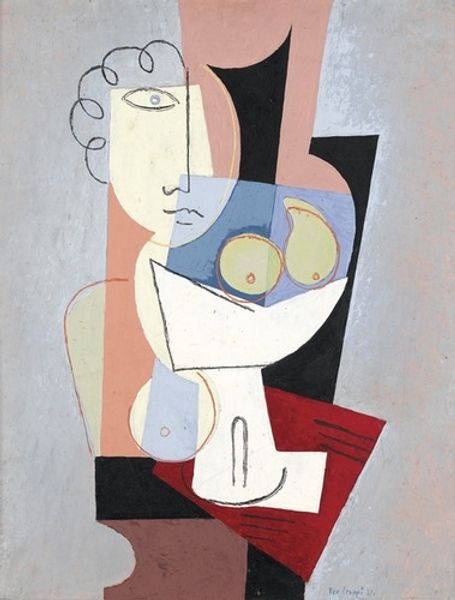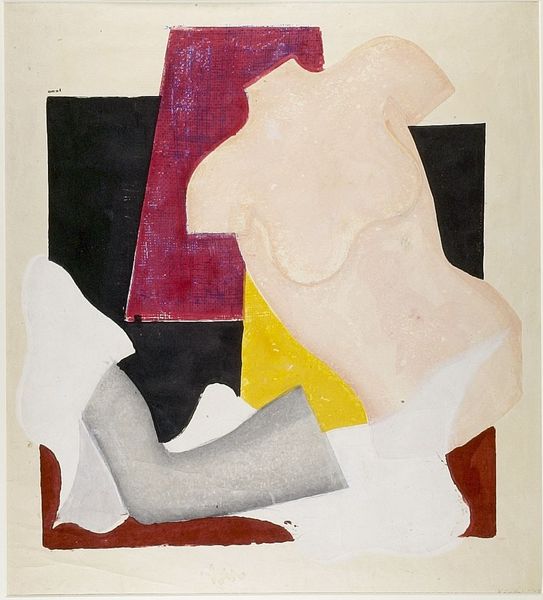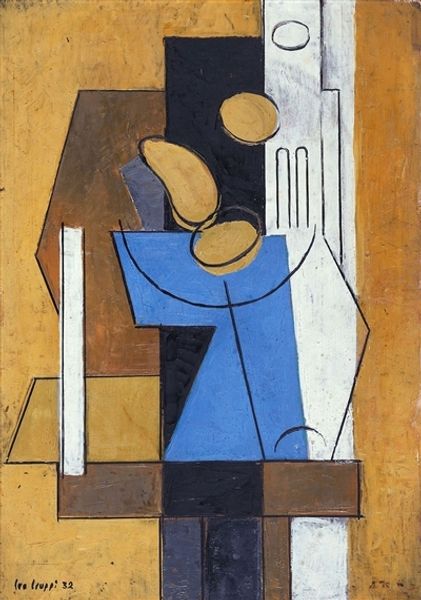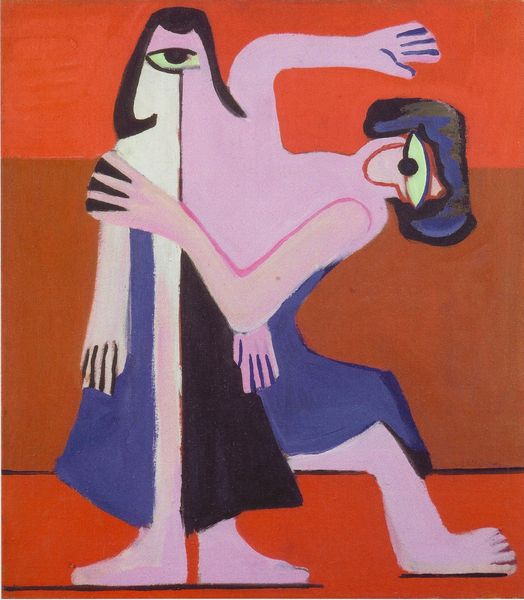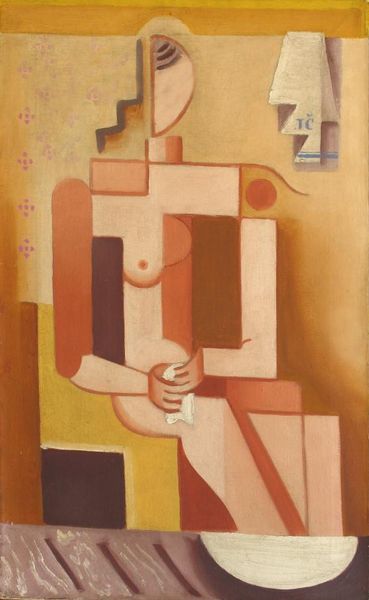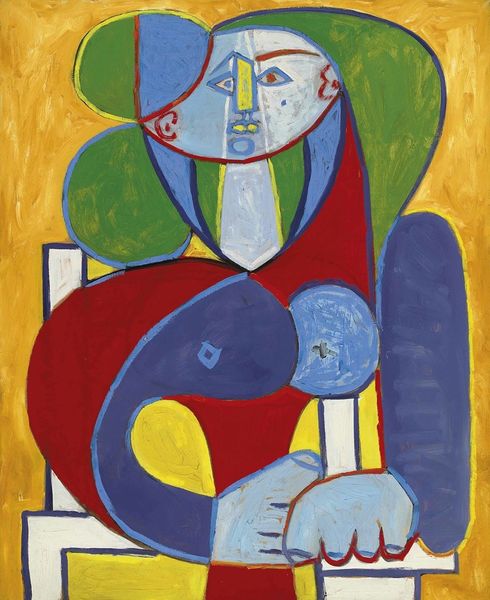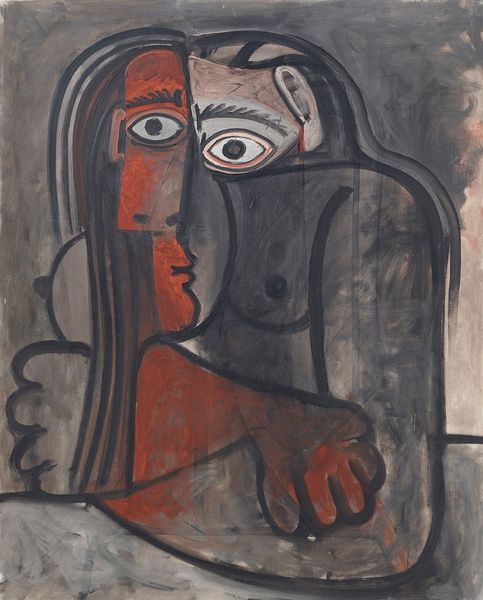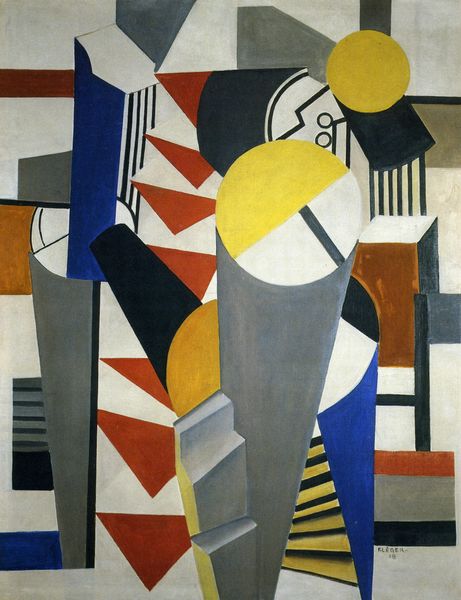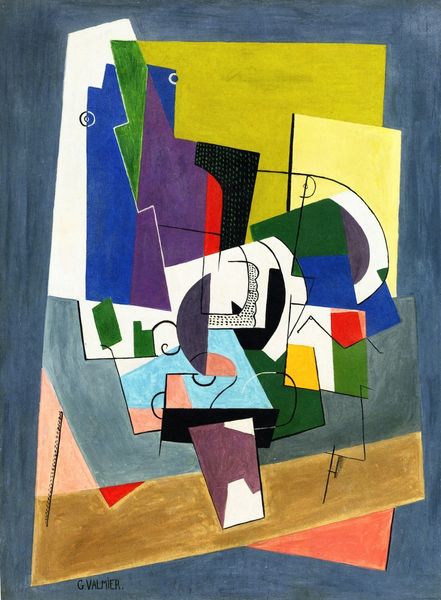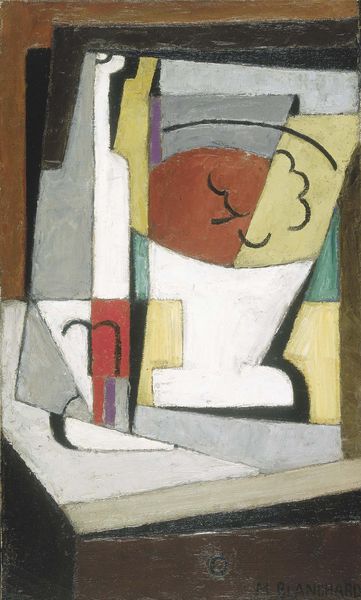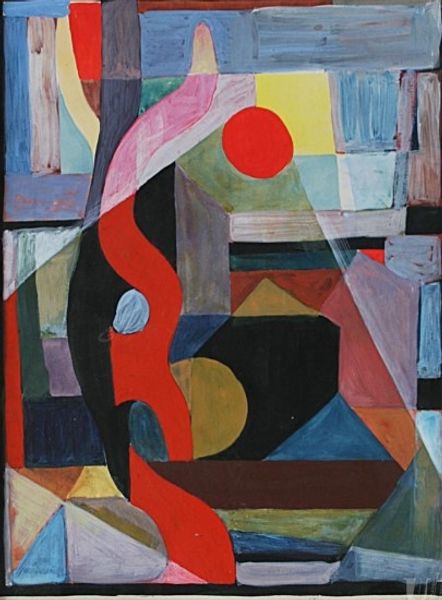
painting, oil-paint
#
portrait
#
cubism
#
abstract painting
#
painting
#
oil-paint
#
painted
#
neo expressionist
#
geometric
#
abstraction
#
painting art
Dimensions: 48 x 38 cm
Copyright: Public domain
Curator: Arshile Gorky's "Blue Figure in a Chair," painted in 1931. It’s currently held in a private collection. I am immediately struck by how disorienting, almost unsettling, the painting is. There is no single focal point. Editor: The colors! The umber and the ochre grounding the ethereal blue. It feels both substantial and… dreamlike. But I find myself asking, what kind of chairs were being produced and consumed at the time, that may have shaped the context of that represented shape. Curator: Ah, but notice how Gorky dismantles the very idea of a "chair." It's more a suggestion of one, flattened and abstracted, interwoven with the figure itself. The planes collide, almost violently, in a very Cubist fashion, like broken mirrors. Editor: The influence is clear. It's fascinating how he adopts this visual language. Looking at it as a materialist, I consider his studio practice – where did he source his materials? The paint, the canvas, the brushes – who manufactured them, under what conditions? This piece wasn't created in a vacuum, you know? Curator: Absolutely, and the abstraction itself feels like a response to the era – the anxieties of industrialization, the fragmentation of experience. Gorky's playing with form, undermining our expectations of representation. What I find appealing here is his way of making art, the means of artistic production during the depression era. Editor: Though he claims it isn’t one, to me it comes across very much as a Neo-expressionist rendering. But tell me what did Gorky himself had to say regarding his working method during those moments? I understand that as a modern artist his studio might not have been considered an industrial workplace. Curator: Sources show he saw the artist's studio as something beyond just a location, he deemed it as a sanctuary for the creative mind. But I guess his methods where pretty avant-garde to his time, right? What do you think? Editor: True, yes. And, after delving deeper, this particular canvas provides insights into the industrial influences in his life back then. Ultimately it feels much more personal. Thanks for the insight. Curator: Thank you, as well. I look at how far art materials production and consumption have come to this day, I wonder what Gorky would make of it all!
Comments
No comments
Be the first to comment and join the conversation on the ultimate creative platform.
